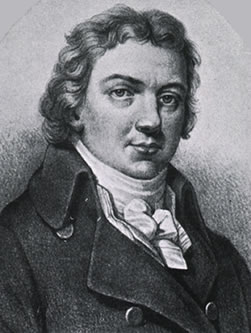This article is part of the series "A Moment in History" where we honor those who have contributed to the growth of medical knowledge in the areas of anatomy, medicine, surgery, and medical research.
Edward Jenner
Edward Jenner (1749 - 1823). English physician and surgeon, Edward Jenner was born in Berkeley, Gloucestershire. His training included a seven year apprenticeship to a surgeon. He then moved to London where he completed his training at the St. George’s Hospital with John Hunter. Jenner became Hunter’s assistant for anatomical dissection and research. After finishing his studies, he returned to Berkeley.
During Jenner’s time smallpox was a disease with high mortality and terrible complications that could leave a patient blind or scarred for life. Of most interest to him was local lore that related that farmers and milkmaids that contracted cowpox could not contract smallpox, even when in direct exposure to smallpox. Cowpox is a viral infection of cows causing only minor discomfort and complications when acquired by a human.
In 1796 Jenner was visited by Sarah Nelmes, a patient with smallpox-like signs on her hands. Jenner diagnosed cowpox instead of smallpox and discovered that she was a milkmaid. Sensing the need for additional research, he inoculated a young boy by scratching the boy’s skin and then rubbing some of the material exuding from Sarah’s pustules. The boy developed cowpox.
A month and a half later Jenner exposed the boy to smallpox. The boy did not develop any signs or symptoms of smallpox. The new era of vaccination had started.
In spite of his success, the spread of this new technique was slow and not easy, with many detractor and critics. In the end, Jenner was honored for his discovery. In 1980 the World Health Organization formally declared the erradication of smallpox from the world. Individuals are not vaccinated against smallpox anymore and only a few samples of the virus exist in restricted laboratories in the world.
In the pages of “Medical Terminology Daily” we explain why the process is called “vaccination” and also the role that Jenner’s discovery had in the “Royal Philanthropic Vaccination Expedition” to the New World.
Sources:
1. “Edward Jenner and the history of smallpox and vaccination” Riedel, S Proc (Bayl Univ Med Cent). Jan 2005; 18(1): 21–25
2. “Edward Jenner and the eradication of smallpox” Willis NJ Scott Med J. 1997 Aug; 42(4):118-21.
3. "Smallpox; A Great and Terrible Scourge" U.S National Library of Medicine"
Image in the Public Domain. Courtesy of the National Library of Medicine, Digital Collections.



